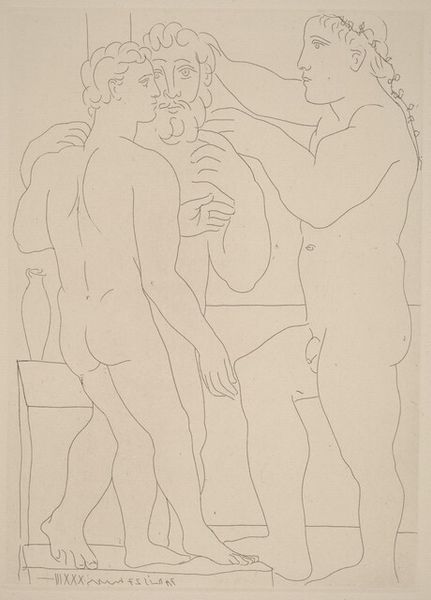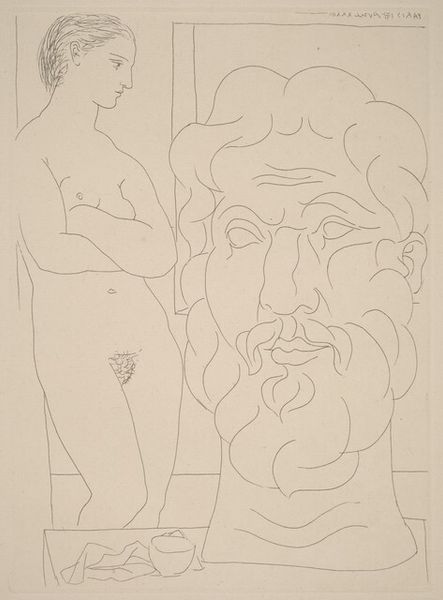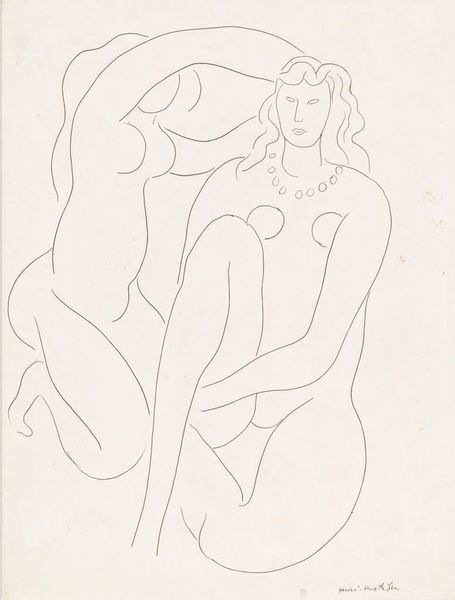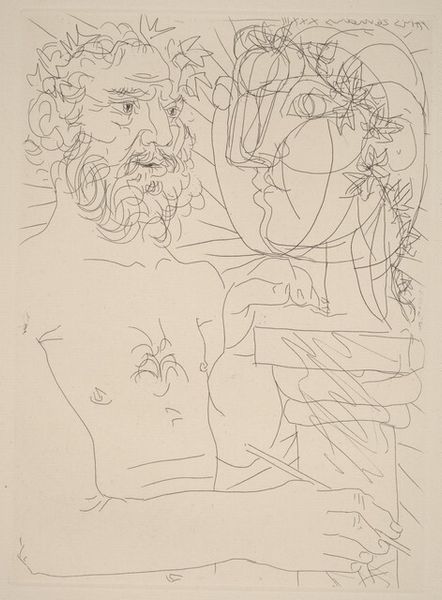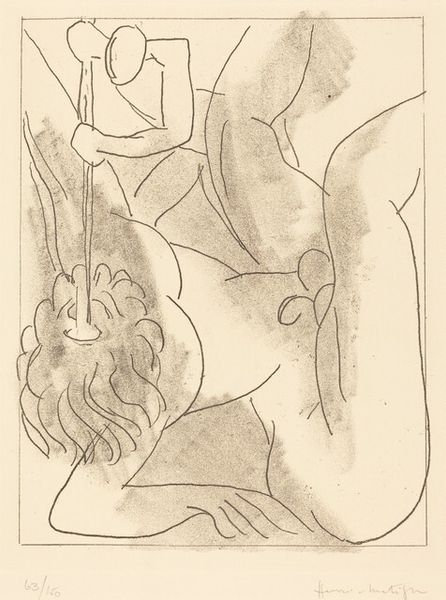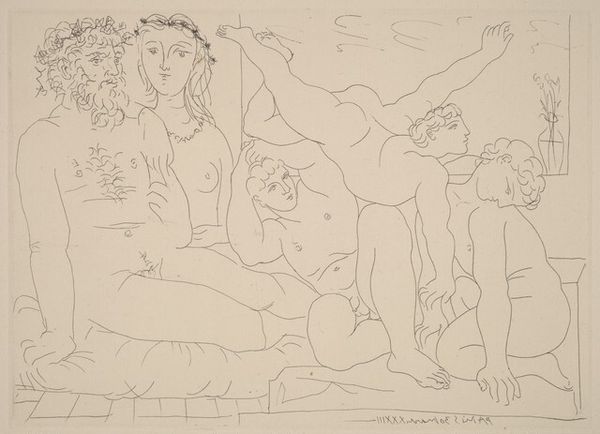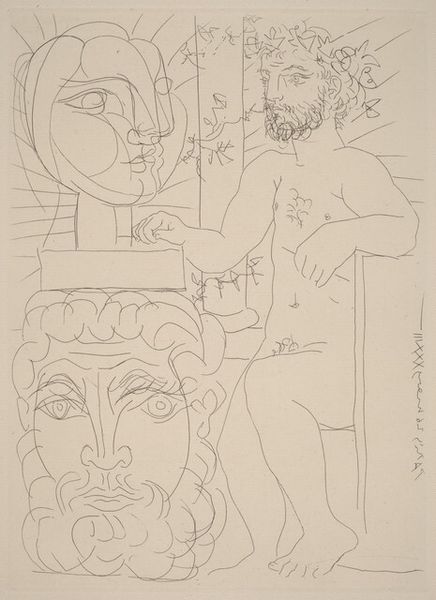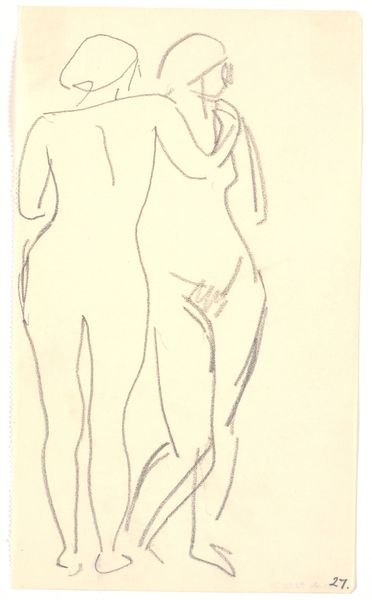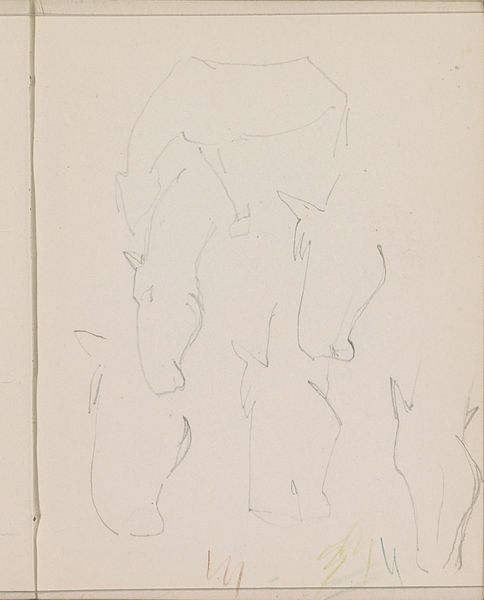
Marie-Thérèse, the Sculptor at Work, and a Sculpture Representing a Greek Athlete (Marie-Thérèse, sculpteur au travail et sculpture représentant un athlète grec 1933
0:00
0:00
drawing, print, ink
#
drawing
#
cubism
#
ink drawing
# print
#
pencil sketch
#
classical-realism
#
figuration
#
ink
#
ink drawing experimentation
#
pen-ink sketch
#
thin linework
#
portrait drawing
#
nude
#
modernism
Copyright: National Gallery of Art: CC0 1.0
Curator: Well, hello there! This intriguing piece is titled "Marie-Thérèse, the Sculptor at Work, and a Sculpture Representing a Greek Athlete," conjured up by Picasso back in 1933, using primarily ink. It's...quite something, isn't it? Editor: It's...sparse. Utterly stark, actually. The thinness of the lines makes it feel like a ghost of something, like a half-remembered dream about antiquity filtered through modernism's relentless deconstruction. I’m immediately drawn to the way it balances classical and fragmented forms using only minimal material, that’s powerful. Curator: Precisely! You've picked up on the tension. The line work itself feels…deliberate. See how it both defines and dissolves form? The suggestion of the sculpture in the background, juxtaposed with the focused figure of Marie-Thérèse – his lover and muse, I might add – feels very intimate, almost voyeuristic. Editor: That relationship certainly impacted his material choices and processes. The relative ease and cheapness of ink compared to paint or sculpture makes this an accessible, immediate medium to work in to capture a scene, maybe even an emotional atmosphere. Also the mass production of prints like these. This brings high art down to earth, engaging a wider audience through material means. It makes you wonder about how this image of a sculptor affects the perception of labor inherent in creating art. Curator: Oh, absolutely! There's a certain labor visible here in the frenetic line work too. It's less about smooth perfection and more about capturing a fleeting moment of creation, or perhaps an obsession. You can almost feel Picasso grappling with his relationship to the classical past, to his muse, to his own artistic legacy through that medium, the physical movement that shaped the image into this form. Editor: Yes, and the way the subject—sculpture—references a larger, physical undertaking using relatively less—just ink—it comments on scale and labor, too. Curator: True, true! He is ever the trickster, leading us down one path while slyly nudging us down another. Editor: All that considered, it reminds me how accessible art-making *can* be. Like Picasso showing that capturing monumental inspiration does not necessarily require grand or costly materials to spark a profound connection with those who come into contact with the work. Curator: In a way, you have reframed my original perception, thinking of the piece almost as a democratic act! Editor: In this light, thinking about the simplicity and directness of ink as a medium it becomes clear that less is truly more here!
Comments
No comments
Be the first to comment and join the conversation on the ultimate creative platform.
